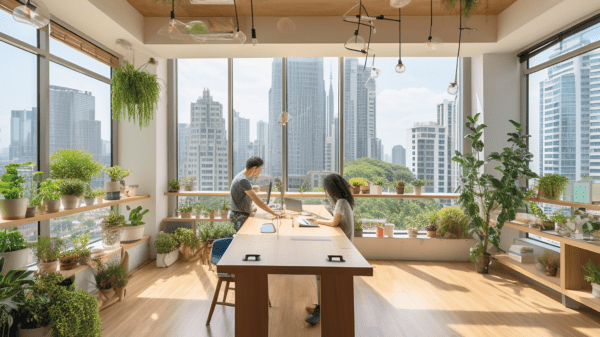Indoor air quality (IAQ) is essential to the health and well-being of building occupants. Given that we spend 80-90% of our time in enclosed spaces, it’s crucial to ensure that the air we breathe is not harmful to our health and well-being. Rigorous management of indoor air quality not only helps prevent health problems linked to air pollution, but also creates a more comfortable and productive working environment.

The challenges of indoor air quality
Indoor air quality can have a significant impact on the health of building occupants. Indeed, poor air quality can lead to a variety of health problems, from skin irritations and respiratory illnesses to nausea and infections. What’s more, indoor air can be 5 to 7 times more polluted than outdoor air. This underscores the crucial importance of effective air quality management in enclosed environments.
Sources of indoor air pollution
Indoor air pollutants can come from a number of sources:
- The building itself: Building materials and furniture can emit volatile organic compounds (VOCs).
- Human activities: Processes such as cooking or the use of chemicals can increase pollution levels.
- Air conditioning and ventilation: Poorly maintained systems can accumulate dust and mold.
Signs of a failing ventilation system include, for example, unpleasant odors, as well as excessive humidity and condensation. Indeed, these indicators often suggest insufficient or faulty ventilation.
Optimizing ventilation and air conditioning
To guarantee healthy air, it’s crucial to comply with the ventilation requirements stipulated in the French Labor Code. Optimizing ventilation and air-conditioning systems is essential. This includes not only the correct installation of these systems, but also their regular maintenance. A well-maintained ventilation system helps to reduce pollutant levels and maintain a healthy indoor environment.
Raising occupant awareness
Raising occupants’ awareness of the importance of air quality is a key step. By understanding how their behavior can influence air condition, occupants can take steps to reduce sources of pollution, such as avoiding the use of toxic products or favoring environmentally-friendly cleaning products. Raising awareness enables employees to become active players in improving air condition.
Nexelec solutions for optimum air quality
To monitor air quality in real time and ensure a healthy indoor environment, Nexelec offers a range of advanced sensors. These sensors measure a variety of parameters, including temperature, humidity, brightness, presence, noise, carbon dioxide (CO2), air pressure, volatile organic compounds (VOCs), fine particulates (PM) and formaldehyde (HCHO). By providing accurate, continuous data, our sensors enable early detection of problems.
By integrating Nexelec solutions, companies can not only guarantee healthier air for their occupants, but also optimize the energy performance of their buildings.
